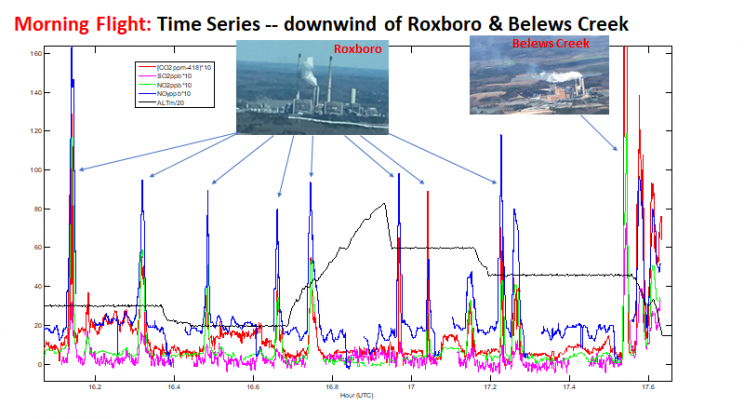ARL Weekly News – March 28, 2019
ATDD
A paper entitled “Evaluation of the High-Resolution Rapid Refresh (HRRR) model using near-surface meteorological and flux observations from Northern Alabama” by Temple R. Lee, Michael Buban, David D.Turner (NOAA Earth Systems Research Laboratory, Global Systems Division), Tilden Meyers, and Bruce Baker was accepted for publication in Weather and Forecasting. In the paper, we found that the HRRR accurately simulated observations of near-surface air and dew point temperature, but had large errors in surface fluxes. These findings help motivate the need for additional work to improve the representation of surface fluxes and their coupling to the atmosphere in future versions of the HRRR. Doing so will be a step toward improving operational weather forecasting models.
HQ
Two research flights were conducted on March 26 to sample plumes from two coal-fired power plants, Roxboro and Belews Creek, in North Carolina. Data collected during the flights include sulfur dioxide (SO2), carbon dioxide (CO2), and nitrogen oxides (NOx), as well as meteorological parameters including temperature, pressure, relative humidity and horizontal wind speed and wind direction. Coupled with the data from EPA’s continuous emission monitoring systems (CEMS), the aircraft data will be used to evaluate the transport and dispersion in the HYSPLIT model. The emission rates of SO2, CO2, and NOx will be estimated using the aircraft observations based on the mass balance approach. These aircraft-based emission rates will be compared to the emission rates in the CEMS. Personnel involved in this aircraft project include Xinrong Ren, Allison Ring, Mark Cohen, Winston Luke, Ariel Stein, Alice Crawford, Christopher Loughner, and Paul Kelley.


